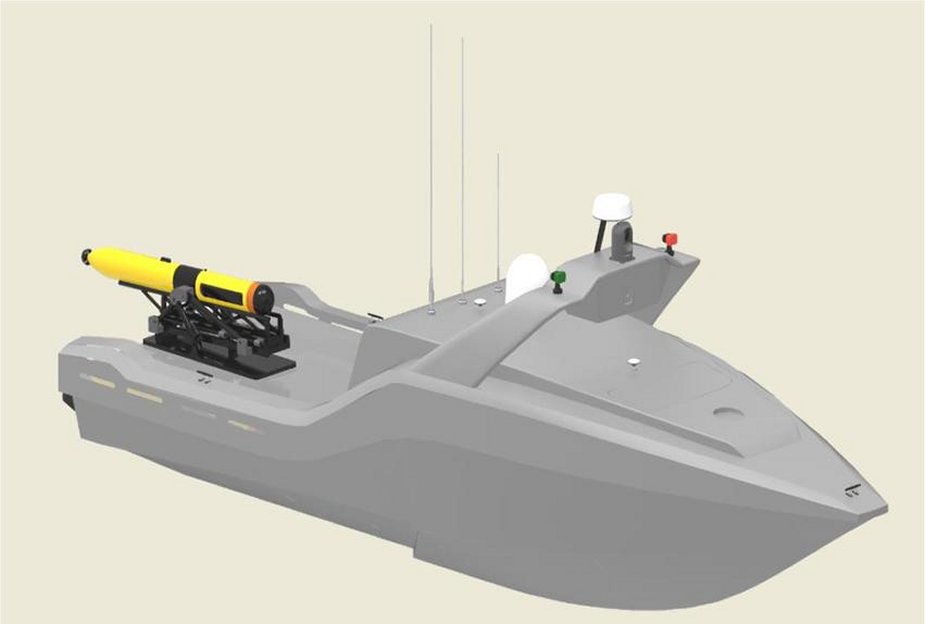Breaking news
Hanwha joins search group for autonomous underwater vehicle.
According to a press release published by Pulse News on June 15, 2021, Hanwha Systems will develop an autonomous underwater vehicle (AUV) for search and rescue missions in partnership with multiple state research institutes and universities including KAIST in a 25-billion-won ($22.3 million) project commissioned by Korea Institute of Marine Science & Technology Promotion. They aim to complete the development by 2025.
Follow Navy Recognition on Google News at this link
 Artist rendering of the future Autonomous Underwater Vehicle (Picture source: Hanwha Systems)
Artist rendering of the future Autonomous Underwater Vehicle (Picture source: Hanwha Systems)
Hanwha Systems already develop a USV (Unmanned Surface Vehicle) and a UUV (Unmanned Underwater Vehicle), which can perform surface ISR and underwater search missions, respectively. The scope of UMS is being expanded from ISR missions to combat missions to include combined operations of manned and unmanned systems. In addition, UMS operation is shifting from the individual operation to the swarm operation. In this regard, our development goal is to further enhance our naval combat system so that it can provide integrated management of UMS.
UMS (Unmanned Maritime System) is a weapons system equipped with high-tech ISR devices to do surveillance and tracking of intruding surface targets or underwater sea mines or submarines.
Hanwha Systems is a global company based in South Korea providing defense electronics and smart ICT solutions.
Based on its core digital software capabilities encompassing both defense and ICT business areas, Hanwha Systems is uniquely positioned to create synergies between defense and commercial industries.
For the past 4 decades since its incorporation in 1978, Hanwha Systems has established an unrivaled position in Korea’s defense industry by successfully performing various systems development programs such as MFR(Multi-Function Radar, CMS(Combat Management System), TICN(Tactical Information Communication Network), etc., based on its R&D capabilities and engineering resources.





























